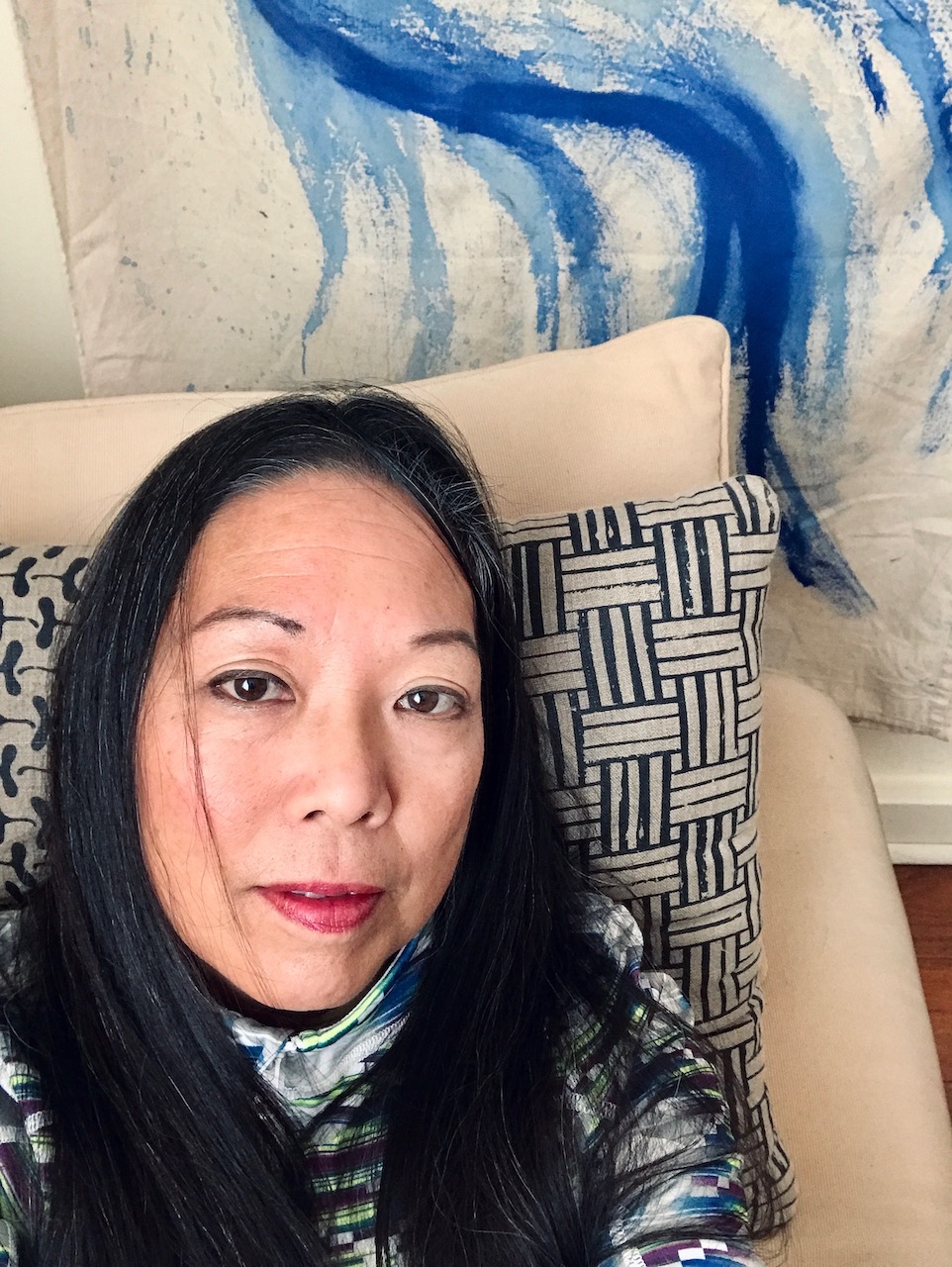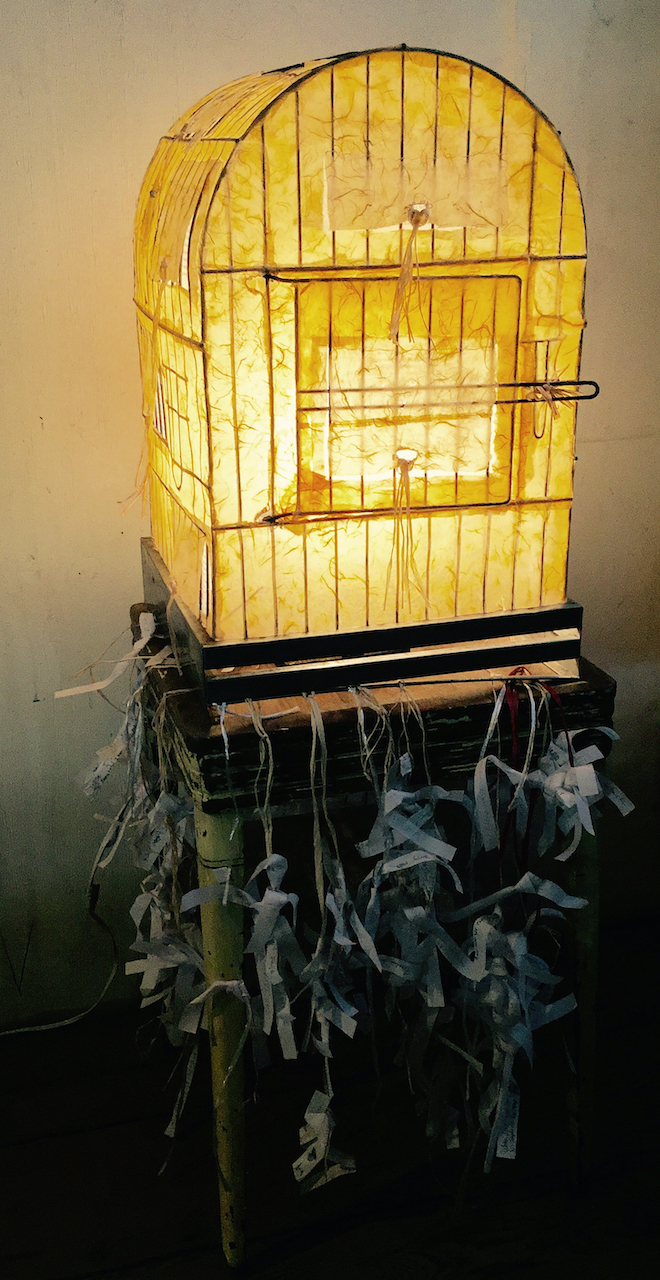

Remembrance Shrine, 2007-2019
birdcage, rice paper, ink, 48x24x24"
The piece is fashioned from a birdcage wrapped in rice paper and is reminiscent of an Obutsudan, a small Buddhist home shrine and glows like a paper lantern and signifies the dignity and resilience of the imprisoned. The memories of those who were incarcerated from 1942-46 are hidden behind shutters on the shrine. In a live gallery setting, the viewer may interact by lifting the shutters to reveal writings about this challenging time and also leave their own written thoughts tied on to the shrine.
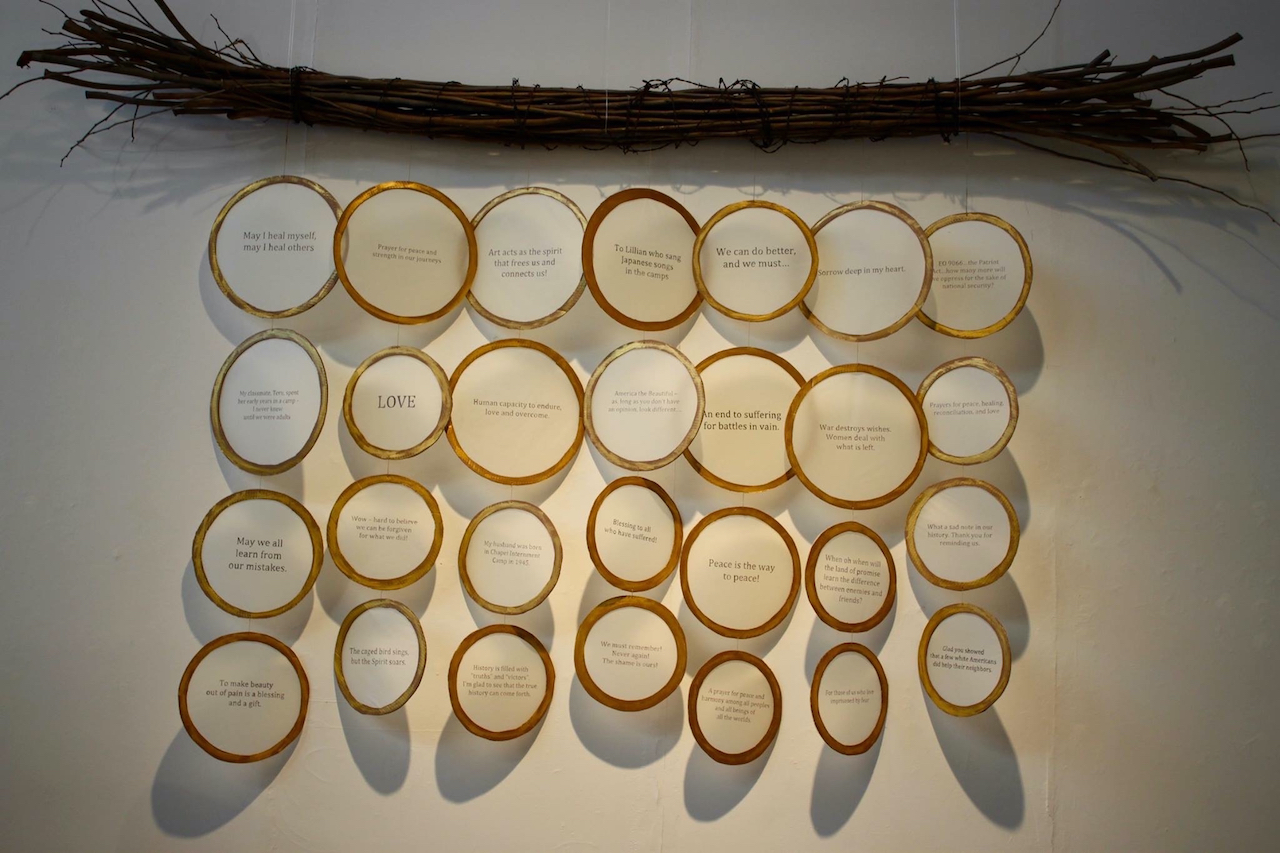
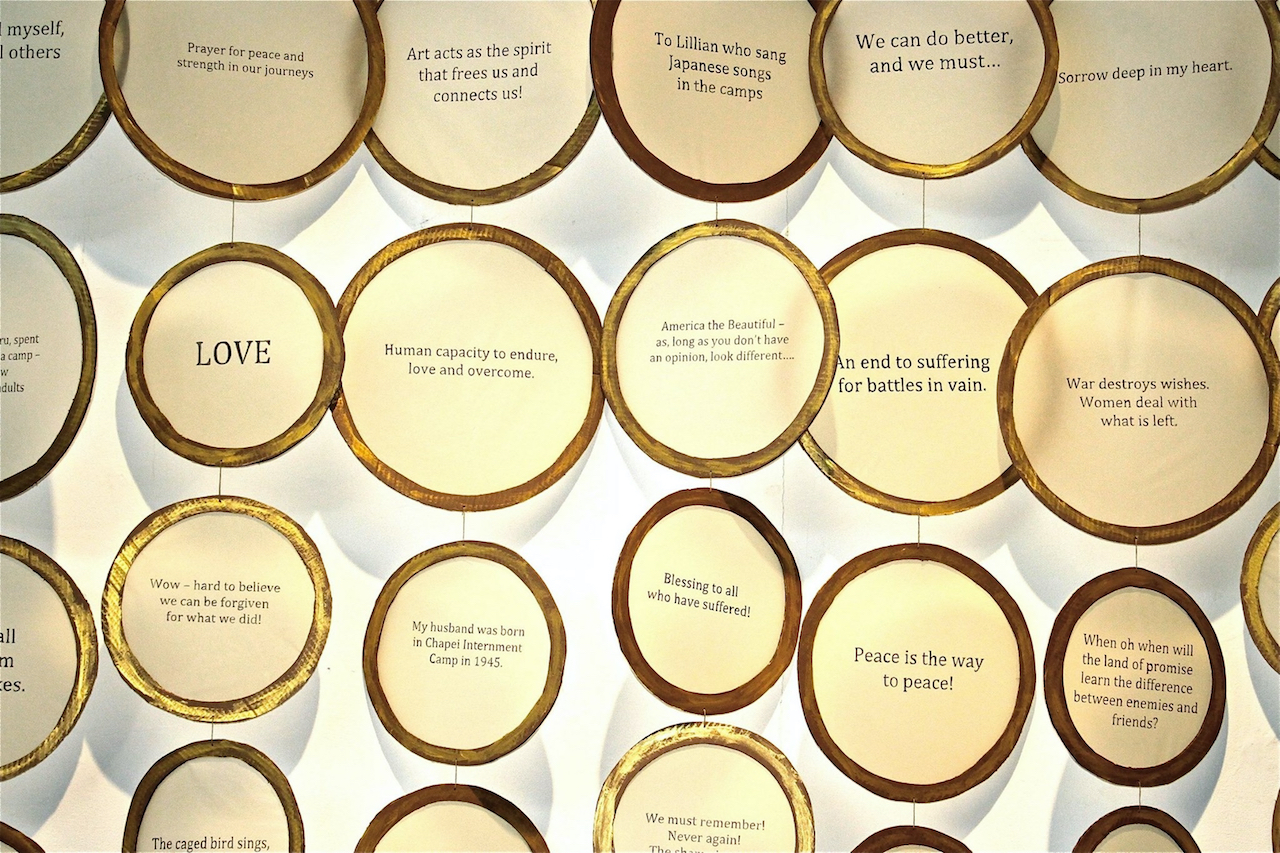
Pearls Left Behind, 2010
vellum, ink, branches, barbed wire, 96”h x 120”w x 12”d
This installation is made up of writings that viewers left me concerning their thoughts on the Japanese American Incarceration after interacting with the “Remembrance Shrine” art piece. The piece is full of unspoken conversations about war, peace, imprisonment, democracy, and reactions to the Japanese American internment. It is my wish that those who were imprisoned be able to read the many apologies and thoughts. I chose to make the entire piece by hand using found material, to make it a meditation and to give it a wabi-sabi character.
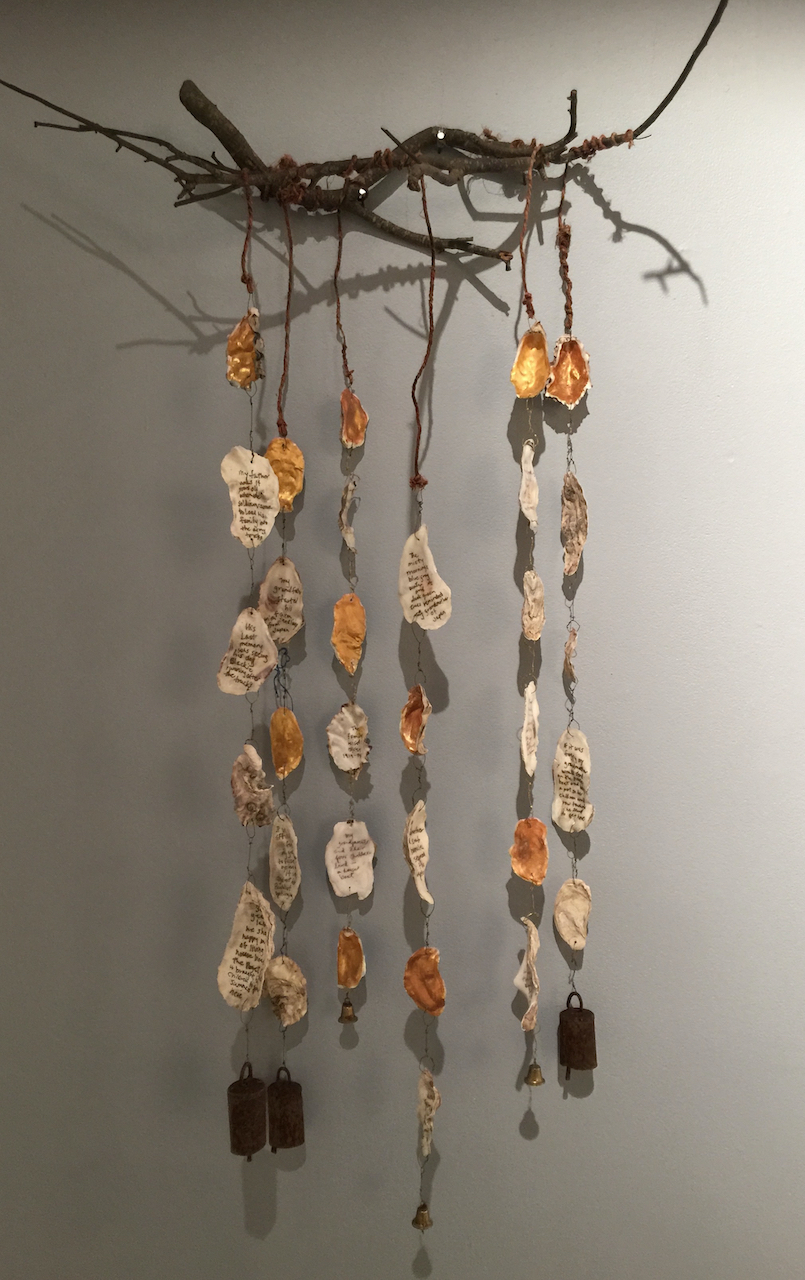
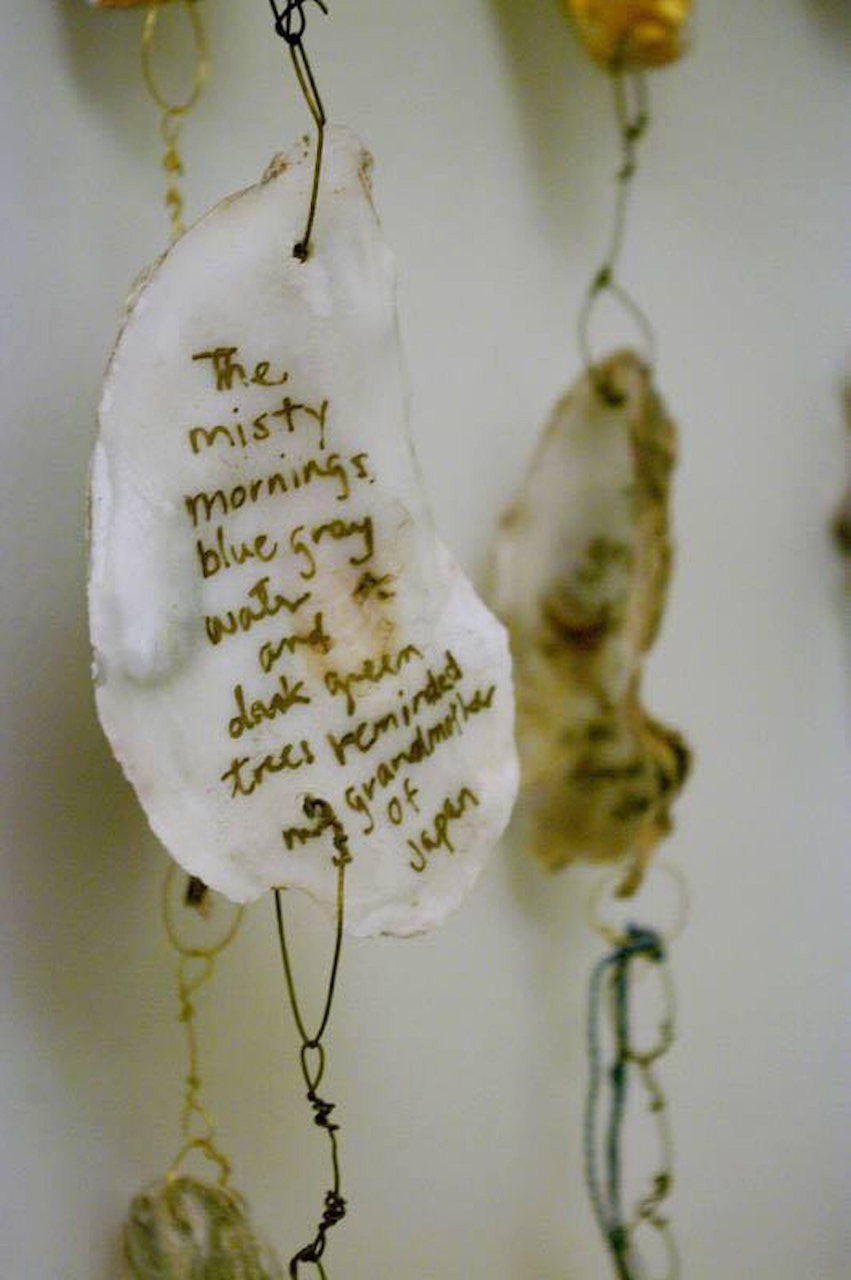
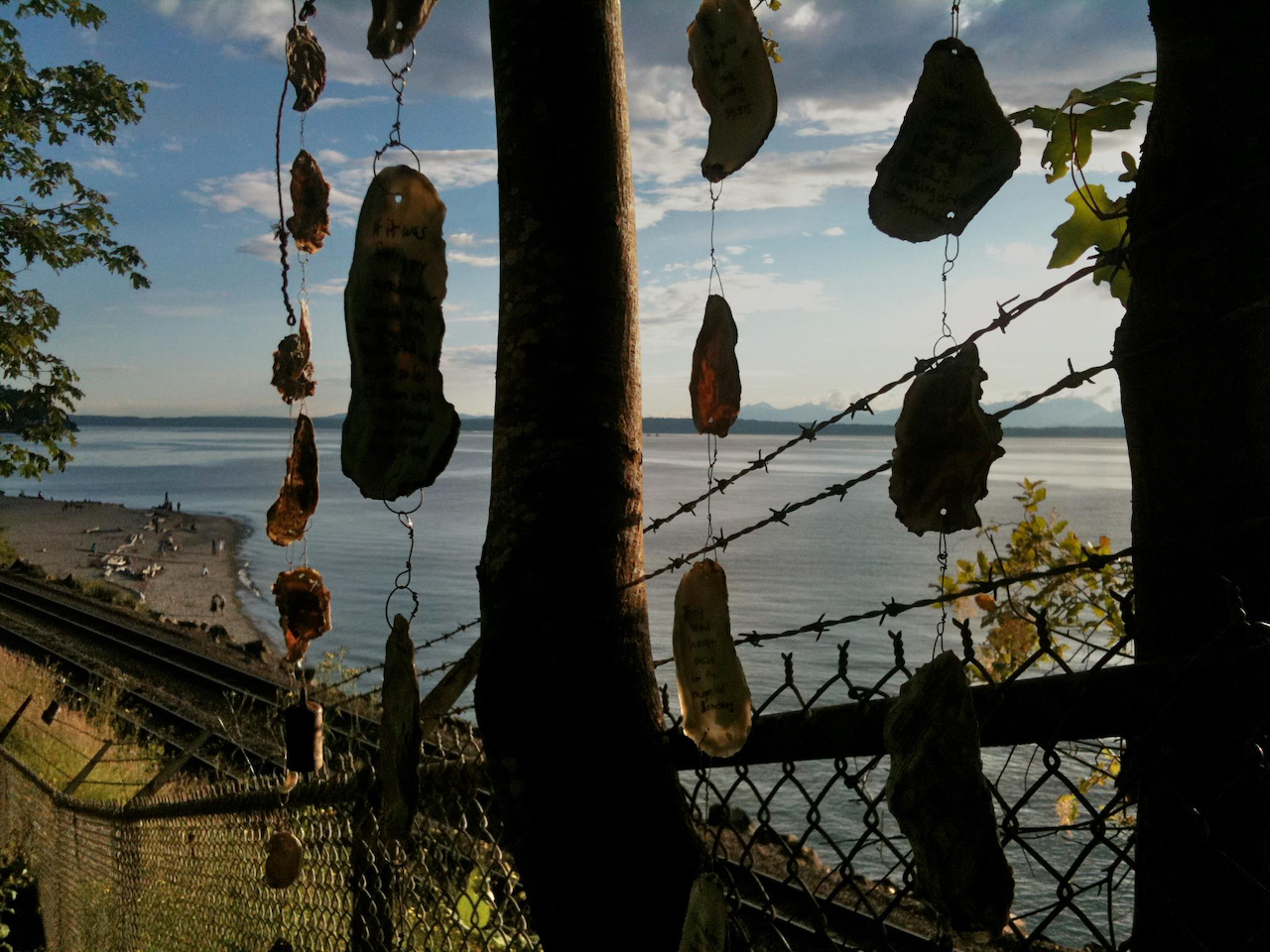
Ancestor Chimes, 2012
Oyster shells, paint, branch, 24h” x 18 x w x 12”
My father’s family settled here in America and raised oysters in the Puget Sound. In this piece I honor these family members, who have mostly passed on. On the oyster shells you will find their stories. Some of the ink may fade over time just as memories do. The shells dangle and move and our legacy travels to reach ancestors via the wind and the sound of bells. I imagine they are pleased to be reminded of the beautiful place they once inhabited. Their livelihood and time in Washington were cut short when they were unjustly forced to move out of the area due to their ethnicity and the war. They spent 4 years in the Tule Lake Concentration Camp. 70+ years later my father recalls happy times of living on a houseboat in Washington and enjoys bringing his children to visit his childhood locale.
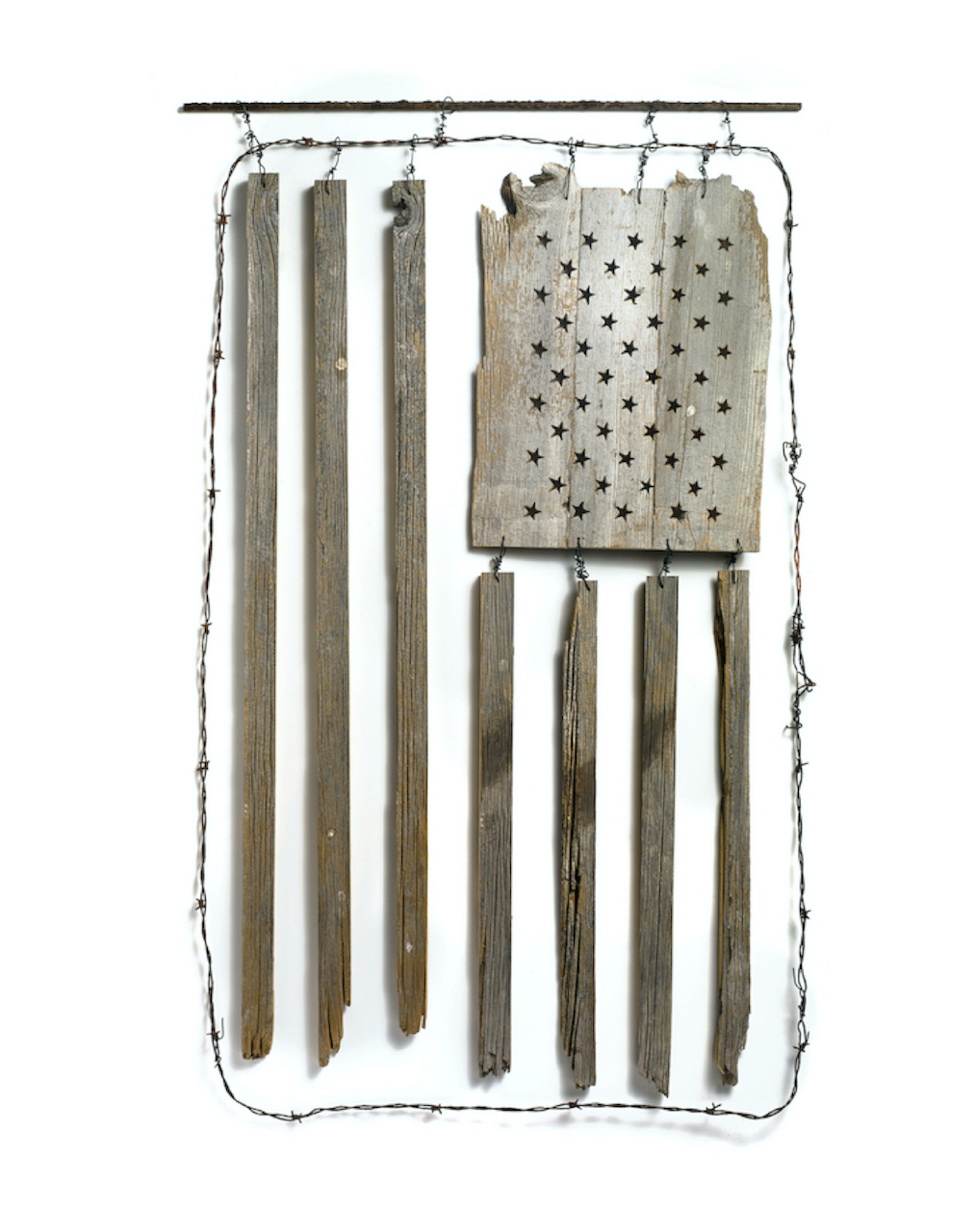
Pledge Allegiance, 2014
Tule Lake Concentration Camp barrack wood, barbed wire, 36h” x 30w” x 6”d
This flag is constructed from Tule Lake Incarceration Camp barrack wood I gathered with my father after attending a pilgrimage. My father was imprisoned there during his teenage years. The pledge of allegiance phrase ‘with liberty and justice for all’ rang hallow during the 1940’s when the US government forced the unconstitutional imprisonment of 120,000 men, women and children of Japanese ancestry into ten incarceration camps. Tule Lake camp became a segregation and high security camp for internees who were labeled disloyal.

Family photo of Kaz Shintani at Tule Lake Barracks







